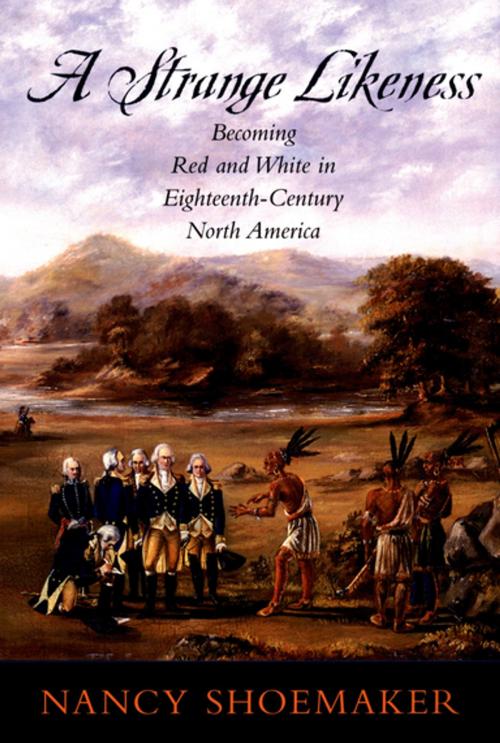A Strange Likeness
Becoming Red and White in Eighteenth-Century North America
Nonfiction, History, Americas, United States, Colonial Period (1600-1775)| Author: | Nancy Shoemaker | ISBN: | 9780199883318 |
| Publisher: | Oxford University Press | Publication: | March 25, 2004 |
| Imprint: | Oxford University Press | Language: | English |
| Author: | Nancy Shoemaker |
| ISBN: | 9780199883318 |
| Publisher: | Oxford University Press |
| Publication: | March 25, 2004 |
| Imprint: | Oxford University Press |
| Language: | English |
The histories told about American Indian and European encounters on the frontiers of North America are usually about cultural conflict. This book takes a different tack by looking at how much Indians and Europeans had in common. In six chapters, this book compares Indian and European ideas about land, government, recordkeeping, international alliances, gender, and the human body. Focusing on eastern North America in the 18th century, up through the end of the Seven Years War in 1763, each chapter discusses how Indians and Europeans shared some core beliefs and practices. Paradoxically, the more American Indians and Europeans came to know each other, the more they came to see each other as different, so different indeed that they appeared to be each other's opposite. European colonists thought Indians a primitive people, laudable perhaps for their simplicity but not destined to possess and rule over North America. Simultaneously, Indians came to view Europeans as their antithesis, equally despicable for their insatiable greed and love of money. Thus, even though American Indians and Europeans started the 18th century with ideas in common, they ended the century convinced of their intractable differences. The 18th century was a crucial moment in American history, as British colonists and their Anglo-American successors rapidly pushed westward, sometimes making peace and sometimes making war with the powerful Indian nations-the Iroquois and Creek confederacies, Cherokee nation, and other Native peoples-standing between them and the west. But the 18th century also left an important legacy in the world of ideas, as Indians and Europeans abandoned an initial willingness to recognize in each other a common humanity so as to instead develop new ideas rooted in the conviction that, by custom and perhaps even by nature, Native Americans and Europeans were peoples fundamentally at odds.
The histories told about American Indian and European encounters on the frontiers of North America are usually about cultural conflict. This book takes a different tack by looking at how much Indians and Europeans had in common. In six chapters, this book compares Indian and European ideas about land, government, recordkeeping, international alliances, gender, and the human body. Focusing on eastern North America in the 18th century, up through the end of the Seven Years War in 1763, each chapter discusses how Indians and Europeans shared some core beliefs and practices. Paradoxically, the more American Indians and Europeans came to know each other, the more they came to see each other as different, so different indeed that they appeared to be each other's opposite. European colonists thought Indians a primitive people, laudable perhaps for their simplicity but not destined to possess and rule over North America. Simultaneously, Indians came to view Europeans as their antithesis, equally despicable for their insatiable greed and love of money. Thus, even though American Indians and Europeans started the 18th century with ideas in common, they ended the century convinced of their intractable differences. The 18th century was a crucial moment in American history, as British colonists and their Anglo-American successors rapidly pushed westward, sometimes making peace and sometimes making war with the powerful Indian nations-the Iroquois and Creek confederacies, Cherokee nation, and other Native peoples-standing between them and the west. But the 18th century also left an important legacy in the world of ideas, as Indians and Europeans abandoned an initial willingness to recognize in each other a common humanity so as to instead develop new ideas rooted in the conviction that, by custom and perhaps even by nature, Native Americans and Europeans were peoples fundamentally at odds.















